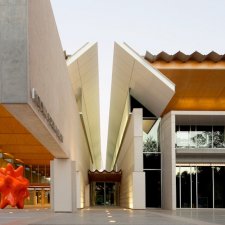- About us
- Support the Gallery
- Venue hire
- Publications
- Research library
- Organisation chart
- Employment
- Contact us
- Make a booking
- Onsite programs
- Online programs
- School visit information
- Learning resources
- Little Darlings
- Professional learning
Henry John Rous (1795–1877), naval officer, racing enthusiast and politician, arrived in Sydney in February 1827 as the commander of the frigate HMS Rainbow. During his first several months in New South Wales, he organised Sydney’s first regatta; made a return voyage to New Zealand; and then escorted governor Ralph Darling on a ‘tour of inspection’ to Newcastle, Port Macquarie and Moreton Bay, during the course of which he named Stradbroke Island in honour of his father, 1st Earl of Stradbroke. He was recalled to India in mid-1827, but before leaving secured a grant of land so that he might later introduce to the colony ‘entire horses of a superior description, blood mares, horned cattle, &c’. Consequently, on his return to Sydney in May 1828, he brought ‘three fine thoroughbreds’ with him and was duly elected an honorary member of the Agricultural Society. During August and September 1828, Rous undertook another journey northward in the Rainbow, charting and exploring the Tweed and Richmond Rivers (the latter of which he named) and thus alerting the colonists to another source of red cedar, a lucrative commodity. Recalled again to India in October 1828, Rous was farewelled with a dinner at which he was commended for having ‘bestowed such lasting public benefit’ on the colony. He eventually attained the rank of admiral, and after retiring from naval service devoted himself to his longstanding love of horses and the track, becoming public handicapper in 1855, devising the weight-for-age scale, and managing the Duke of Bedford’s stables for many years. He died, childless, in 1877.
Purchased 2015



On one level The Companion talks about the most famous and frontline Australians, but on another it tells us about ourselves.



Visit us, learn with us, support us or work with us! Here’s a range of information about planning your visit, our history and more!



We depend on your support to keep creating our programs, exhibitions, publications and building the amazing portrait collection!